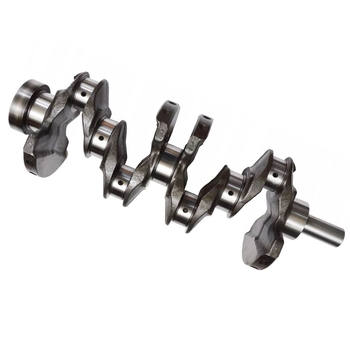Introduction
Have you ever been driving along, humming to your favorite tune, when suddenly your car starts shaking and making strange noises? It's enough to make your heart skip a beat. As it turns out, these symptoms might be related to your crankshaft. But don't worry – we're here to help you diagnose and address crankshaft-related engine vibrations and noises like a pro.
Understanding the Crankshaft
Before we dive into diagnosing issues, it's essential to understand what the crankshaft does. In simple terms, the crankshaft transforms the reciprocating linear piston motion into rotational motion that drives your car's wheels. Interestingly enough, even a small problem with the crankshaft can lead to noticeable engine vibrations and noises.
Common Crankshaft Issues
So, what can go wrong with the crankshaft? Here are some common culprits:
Diagnosing Crankshaft-Related Engine Vibrations and Noises
Now that we know what can go wrong let's talk about how to diagnose these issues. Here are some steps you can take:
Visual Inspection
First, perform a visual inspection of the engine compartment. Look for any obvious signs of damage, such as leaks, broken parts, or worn components. Pay particular attention to the crankshaft and its related components.
Listen for Unusual Noises
Next, start your car and listen carefully for any unusual noises, especially those coming from the engine. Some common crankshaft-related noises include knocking, rattling, and grinding. Try to identify where the noise is coming from and when it occurs (e.g., at idle, during acceleration, etc.).
Check the Engine Mounts
Engine mounts can sometimes be the root cause of vibrations, even if they're not directly related to the crankshaft. Examine the engine mounts for signs of wear or damage, and replace them if necessary.
Perform a Road Test
Finally, take your car for a short drive to see if you can reproduce the vibrations and noises. Pay attention to how they change as you accelerate, decelerate, and cruise at different speeds. This information will be invaluable when diagnosing the issue.
Practical Application
Once you've identified the potential cause of your engine's vibrations and noises, it's time to take action. Here are some tips:
- If you suspect worn or damaged crankshaft bearings, consult a professional mechanic for further inspection and repair.
- For crankshaft misalignment, you may need to have your engine realigned by a qualified technician.
- If the harmonic balancer is at fault, it's typically best to replace it rather than attempting a repair.
Conclusion
Diagnosing crankshaft-related engine vibrations and noises might seem daunting at first, but with the right approach, you can identify and resolve these issues like a pro. Remember to stay calm, follow our step-by-step guide, and consult a professional mechanic when necessary. With a little patience and perseverance, you'll be back on the road in no time, enjoying a smooth, quiet ride.




